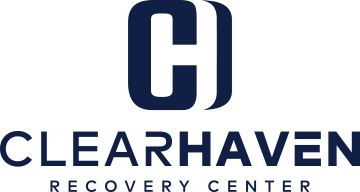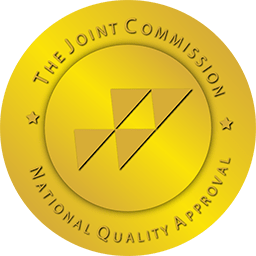Addiction is a complex disease that requires comprehensive treatment. When seeking help for addiction, it is crucial to understand the different treatment options available. Two commonly used forms of treatment are traditional inpatient hospitalization and partial hospitalization. In this article, we will explore the distinctions between these two options and discuss the factors to consider when choosing the right treatment for addiction.
What is traditional inpatient hospitalization?
Traditional inpatient hospitalization involves round-the-clock care in a hospital setting. Individuals undergoing traditional inpatient treatment stay at the hospital for an extended period, typically ranging from a few weeks to several months. The treatment is highly structured and intensive, providing a controlled environment to focus solely on recovery.
One of the primary benefits of traditional inpatient hospitalization is the constant supervision and medical support. Patients have access to a team of healthcare professionals, including doctors, nurses, and therapists, who are readily available to address any medical or psychological needs. The 24/7 care ensures that individuals receive immediate attention and assistance during the detoxification process and throughout the treatment journey.
However, traditional inpatient hospitalization also has limitations. The extended duration of stay can be disruptive to daily life and may require individuals to put their personal and professional responsibilities on hold. Additionally, the cost of inpatient treatment can be significant, making it less accessible for some individuals seeking addiction treatment.
What is partial hospitalization?
Partial hospitalization, also known as day treatment, is a structured program that provides intensive treatment during the day while allowing individuals to return home in the evenings. It offers a middle ground between inpatient hospitalization and outpatient treatment, providing a comprehensive level of care without the need for 24/7 hospitalization.
Partial hospitalization programs typically involve daily therapy sessions, counseling, group therapy, and educational activities. These programs are designed to address the physical, psychological, and emotional aspects of addiction. Individuals in partial hospitalization receive support and guidance from a team of healthcare professionals, but they have the flexibility to maintain some level of normalcy in their daily lives.
Benefits and limitations of partial hospitalization
Partial hospitalization offers several benefits for individuals seeking addiction treatment. Firstly, it allows individuals to receive intensive treatment while still being able to fulfill their personal and professional obligations. This flexibility can be particularly important for those who have family or work commitments that cannot be put on hold for an extended period.
Another advantage of partial hospitalization is the ability to practice newly acquired coping skills in real-life situations. By returning home each evening, individuals have the opportunity to apply what they have learned in treatment to their everyday lives. This practical approach can enhance the effectiveness of treatment and support long-term recovery.
However, partial hospitalization may not be suitable for everyone. Individuals who require constant medical supervision, have severe co-occurring mental health disorders, or lack a supportive and stable home environment may benefit more from traditional inpatient treatment. It is essential to assess individual needs and circumstances when considering partial hospitalization as a treatment option.
Key differences between traditional inpatient hospitalization and partial hospitalization
While both traditional inpatient hospitalization and partial hospitalization aim to provide effective addiction treatment, there are key differences between the two options. The primary distinction lies in the level of 24/7 care and supervision.
Traditional inpatient hospitalization offers a highly structured and controlled environment, providing constant medical and psychological support. This level of care is beneficial for individuals with severe addiction or co-occurring mental health disorders that require intensive monitoring and intervention.
On the other hand, partial hospitalization allows individuals to receive intensive treatment during the day while maintaining some level of independence. It offers a more flexible approach, allowing individuals to apply their newly acquired skills in real-life situations. Partial hospitalization is often the preferred choice for those who have a stable home environment and a strong support system.
Factors to consider when choosing between the two options
When deciding between traditional inpatient hospitalization and partial hospitalization, several factors need to be taken into consideration. These include the severity of the addiction, the presence of co-occurring mental health disorders, the level of support available at home, and the individual’s personal and professional responsibilities.
Individuals with severe addiction or co-occurring mental health disorders may require the round-the-clock care provided in traditional inpatient hospitalization. On the other hand, those with a stable home environment and a strong support system may find partial hospitalization to be a more suitable option.
It is also important to consider the individual’s daily commitments and responsibilities. Traditional inpatient hospitalization may require putting personal and professional obligations on hold, while partial hospitalization allows individuals to continue their daily lives to some extent.
Success rates and effectiveness of partial hospitalization and traditional inpatient hospitalization
Both partial hospitalization and traditional inpatient hospitalization have been proven effective in treating addiction. The success rates vary depending on individual circumstances, the commitment to treatment, and the level of support received during and after treatment.
Traditional inpatient hospitalization often provides a higher level of structure and supervision, which can contribute to initial success in achieving sobriety. However, long-term recovery may be more dependent on the individual’s ability to apply the skills learned in treatment to real-life situations, which is a component of partial hospitalization.
Ultimately, success rates and effectiveness are highly individualized, and the key lies in finding the treatment option that best aligns with the individual’s needs, circumstances, and preferences.
Cost comparison between partial hospitalization and traditional inpatient hospitalization
Cost is an important consideration when choosing addiction treatment options. Traditional inpatient hospitalization tends to be more expensive due to the round-the-clock care, accommodation, and medical support provided. The cost can vary depending on the duration of the stay and the location of the treatment facility.
Partial hospitalization, being a less intensive form of treatment, is often more cost-effective than traditional inpatient hospitalization. It eliminates the need for accommodation and reduces the overall medical expenses associated with round-the-clock care.
However, it is important to note that cost should not be the sole determining factor when choosing addiction treatment. The quality of care, individual needs, and long-term effectiveness of the chosen treatment option should also be taken into consideration.
Conclusion: Finding the right addiction treatment option for you
When it comes to addiction treatment, there is no one-size-fits-all approach. The decision between traditional inpatient hospitalization and partial hospitalization should be based on individual needs, circumstances, and preferences.
Traditional inpatient hospitalization offers a highly structured and intensive treatment environment, providing constant medical and psychological support. It is suitable for individuals with severe addiction or co-occurring mental health disorders that require round-the-clock care.
Partial hospitalization, on the other hand, allows individuals to receive intensive treatment during the day while maintaining some level of independence. It offers flexibility and the opportunity to practice newly acquired skills in real-life situations.
It is crucial to consider factors such as the severity of the addiction, the presence of co-occurring mental health disorders, the level of support available at home, and personal and professional responsibilities when choosing the right treatment option.
Remember, successful addiction treatment requires a comprehensive and individualized approach. By understanding the distinctions between traditional inpatient hospitalization and partial hospitalization, individuals can make informed decisions and find the treatment option that best suits their unique needs and circumstances.
If you or someone you know is struggling with addiction, reach out to a healthcare professional or addiction treatment center to explore the available treatment options and find the support needed for recovery.
Contact us today at 833.970.2054.











